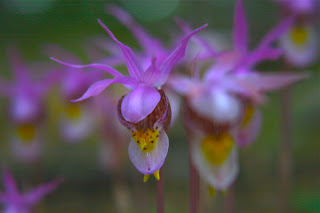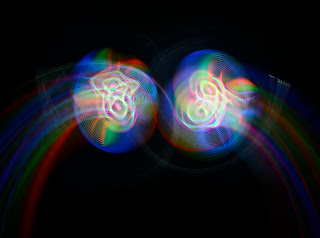Control Freak - Better Lighting Tools
I've been experimenting with light painting now for several years. That meant scrounging up whatever could be used to illuminate things at night without having to plug them into the wall. I amassed some battery operated lights - mostly toys. Headlamps, key-lights, flashlights, novel light sculptures, you name it. If it produced some kind of colored light, I collected it. The problem with most of these items is the on/off control. Some lights cycle through blinking patterns or colors and this doesn't lend itself to controlling the tool very well. Imagine trying to draw a specific pattern and when you are finished not being able to shut the tool off without it cycling through unwanted modes. The art of light painting has grown exponentially and where there is a demand, supply will follow. A friend of mine who also desired to get more control from his light sources, has developed some fabulous new tools that really make control a priority. Better lighting tools with more control.The above image made with a PCP (Programmed Color Phaser) tool with rocker switch for on/off/momentary off control. This replaces the V24 (designed as a garden light), and has more color phasing options. Head on over to LightPaintingTools.com to see the next generation of light sources made by a lightpainter for lightpainters.
March snowstorms bring April blossoms
 Spring is here and that means flowers. And longer days. If you are
lucky that also means vacations! We are fortunate to have some rare wild
orchids in our area. Known as the Calypso Orchid or Fairy Slipper,
"it is the only species currently classified in the genus Calypso, which takes its name from the Greek signifying concealment, as they tend to favor sheltered areas on conifer forest floors."1 Every
year depending on moisture and whether or not the area was disturbed
(elk frequent the meadow), we get from 50 to over 100 orchids in a patch
roughly 10x5 feet near some moss covered rotted logs.
Spring is here and that means flowers. And longer days. If you are
lucky that also means vacations! We are fortunate to have some rare wild
orchids in our area. Known as the Calypso Orchid or Fairy Slipper,
"it is the only species currently classified in the genus Calypso, which takes its name from the Greek signifying concealment, as they tend to favor sheltered areas on conifer forest floors."1 Every
year depending on moisture and whether or not the area was disturbed
(elk frequent the meadow), we get from 50 to over 100 orchids in a patch
roughly 10x5 feet near some moss covered rotted logs. The cover image features one of the first bloomers (along with Crocus and Tulips) to spring up out of the snow and announce warmer and more colorful times to come.
 |
| Coeur d'Alene Mine - Central City |
Magnificent Rust - Mining Town Remnants
Colorado is flush with old mining towns and their remnants. One of the most prolific mining areas to boom in the 19th century was Central City. So called the "Richest Square Mile on Earth," that designation may not hold up today but the area is teeming with remnants of gold excavation and extraction activities.Nevadaville and Blackhawk flank the town to the West and East and some say that's what gave it the name. The Coeur d'Alene mine is still open for tours on the weekends. Nevadaville is almost a ghost town with only a few buildings inhabited and probably not year round. There are several defunct facilities here. The mine shafts are very dangerous due to decomposing pulverized granite sides. Many aspens have overtaken several of the outbuildings near the Prize mine and this place would be a fantastic fall photoshoot. Check back for an autumn perspective soon.
 |
| The Prize Mine - Nevadaville |
1Wikipedia - Calypso (orchid)









